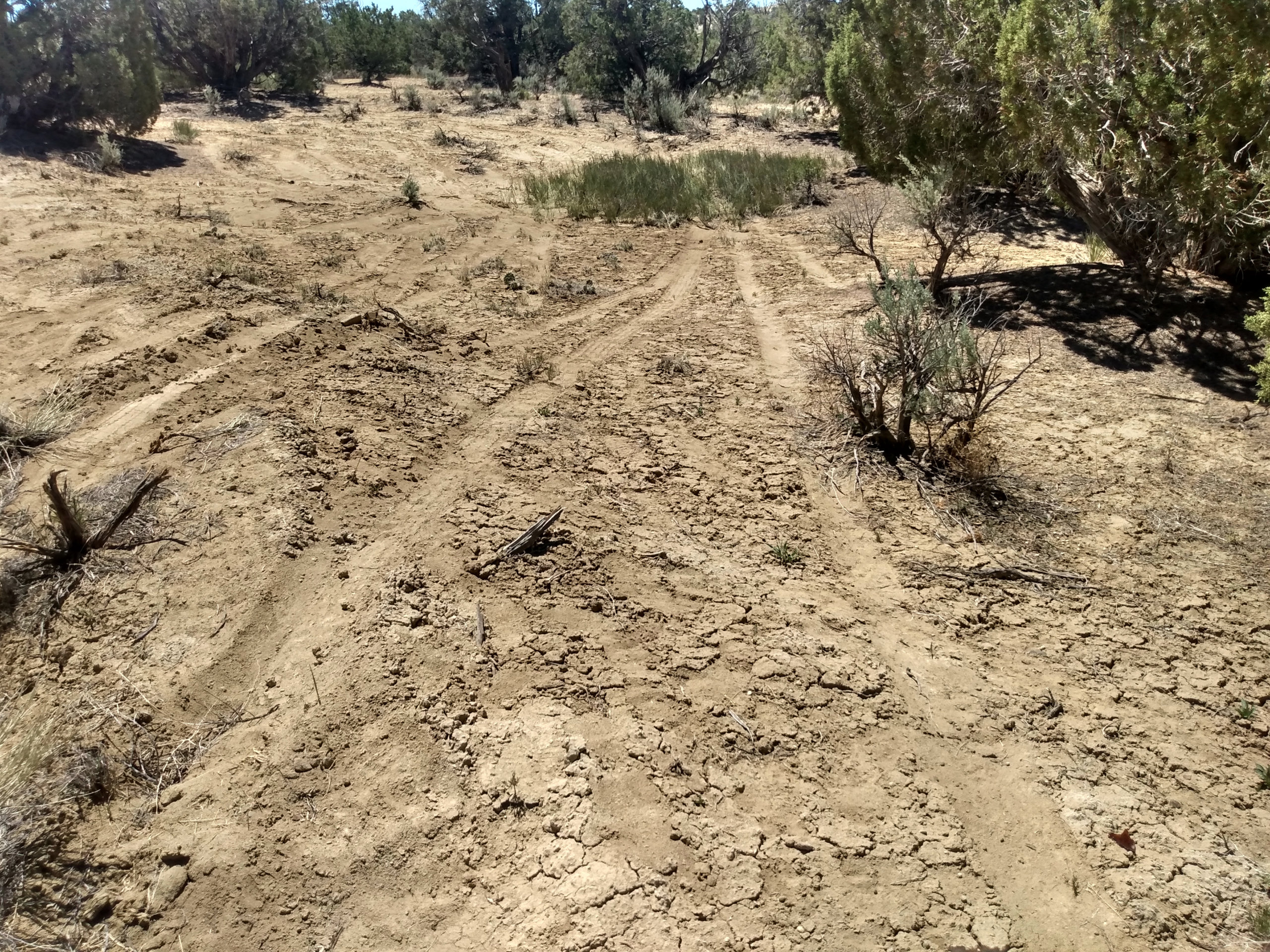As outdoor recreation increases, OHVs departing from trails leave a noticeable impact
When it comes to outdoor recreation, departing from designated trails can have negative impacts on the areas. Axie Navas, the director of the state’s Outdoor Recreation Division, said mountain bicycles, hikers and off-highway vehicles can all leave their tracks across the landscapes.
But when the driver of an off-highway vehicle, like an ATV or dirt bike, heads off of established trails, it is much more noticeable, according to Roger Pattison, a board member of the industry group endeavOR New Mexico. Pattison has decades of experience with OHVs.
He said a single person driving an OHV off of the established trail leaves obvious tracks that can result in more people following without realizing that it is not an official trail.
This is what Aaron Miller noticed while visiting the Buckman Road area near Santa Fe, where he has been frequenting for the past two decades.
Last year, Miller saw a barricade broken that previously kept OHVs out of the riparian area that had recently undergone restoration. That barricade remained down and Miller has become concerned about OHV users leaving the designated trails, which could lead to an irreversible impact on the landscape.
Some of Miller’s concerns are centered around the fragile soil, which is highly coarse and has very little organic matter in it.
Every time people drive across it, they are destroying a layer of topsoil. Miller said if only one person drove across it, the soil could recover. But the repeated use leaves a scar on the landscape.
OHVs can also increase erosion and Miller is concerned that when monsoon storms arrive, the loose soil will wash into the waterways. This could create problems for downstream water users.
Recreation is not the only threat the landscape has faced over the years. Intense grazing in the past has also had an impact, but Miller said the state is entering a new era of land use. This new era is shifting the land use from grazing to outdoor recreation.
He described the negative impacts of outdoor recreation as loving the locations to death.
The number of people recreating in New Mexico has increased in recent years, a trend that has been documented nationwide. Navas said a lot of people who have never participated in outdoor activities are now starting to get outside and recreate.
Intentional trail planning and development can help reduce the conflicts related to outdoor recreation, Navas said. That includes signage telling people what kinds of activities are allowed in different areas.
At the same time, there will be bad actors who disregard signs and head off of designated trails.
Pattison said law enforcement will be key to protecting the environment while promoting recreation.
“The law is our best proactive angle to keep people in the right place,” he said.
Pattison said education is key to protecting the landscapes while allowing for all types of outdoor recreation.
He said the opportunity to participate in off-highway vehicle recreation can become limited if people do the wrong thing, like drive off trails.
Finally, Pattison said OHV users need to have access to enough places to ride. He said OHV drivers have seen a decrease in opportunities to ride while there has been an increase in OHV recreation.
The City of Elephant Butte is one area of the state that has embraced OHV recreation and provided opportunities for the drivers. A 60-acre park in Elephant Butte provides OHV training, education and challenge courses, Pattison said.
He said the best defense to keep OHV users from leaving trails is to provide more locations and better access for people to ride.
The Outdoor Recreation Division has an infrastructure grant program to help with initiatives and Navas said there are dozens of projects similar to the one in Elephant Butte that are popping up across the state.
Navas said there is a place in New Mexico’s outdoor recreation environment for OHVs like motorcycles and side-by-sides, which can be enjoyed both by residents and by tourists.
Like Pattison, she emphasized the need for trail systems where OHV users can recreate responsibly without harming the environment. She said that means both a designated and well-maintained trail and signage to indicate where the drivers can and cannot go.
She highlighted the work of the Enchanted Circle Trails Association as an example of developing trails that reduce conflict in the Taos area.
Navas said Colorado recently launched a professional trail builders certification program and she said there is potential in New Mexico for a similar program.
She said professionalizing the trail building can improve safety as well as outdoor recreation while also protecting the environment.
But environmental protection involves more than just trails and signs. Navas said it also includes purchasing conservation land and engaging in projects like riverbank restoration, which can improve water quality while also increasing access to the rivers for recreation like fishing.
This article was originally posted on As outdoor recreation increases, OHVs departing from trails leave a noticeable impact


